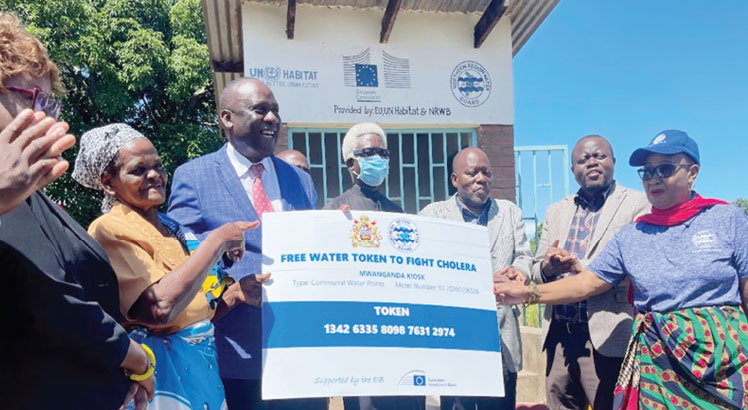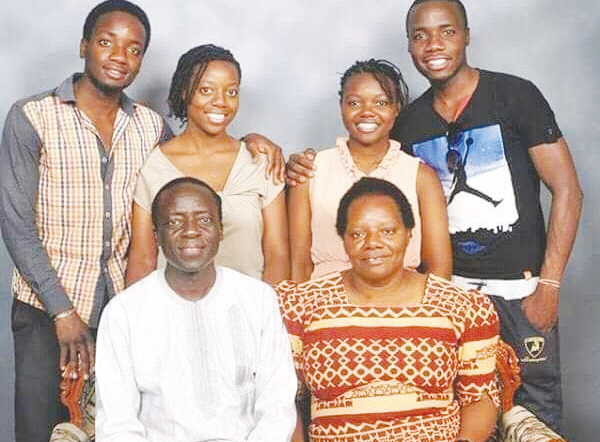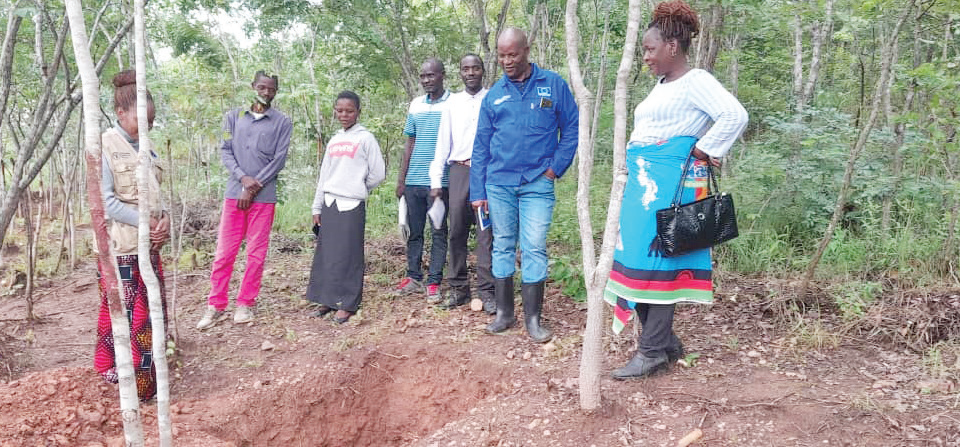Easing access to water
For the past three years, Regina Charles, 33, from Mathithi Village in Ntcheu used to walk eight kilometres to fetch water for her family.
The long walks to the nearest borehole denied her time to take care of her family, do business and participate in public life.
“The borehole close to my village stopped functioning years back with no repairs in sight,” she says.
Regina, like all women in the rural locality under Traditional Authority Ganya, used to spend about four hours waiting for a turn at the distant but overwhelmed water pump.
Fanny Gwazani, from Mkumphira Village, says some women suffered brutal beatings from their husbands, who suspected their wives were cheating on them.
“Little did they know the struggles we had to go through just to find water,” she says.

Nowadays, Regina and Fanny access water from community taps close to their homes.
They walk just about 20 minutes to draw water for their households from the water points rehabilitated by the Department of Water Supply and Sanitation with support from the Global Environmental Fund (GEF).
The department in the Ministry of Forestry and Natural Resources has rehabilitated various water schemes in Phalombe, Ntcheu, Mangochi, Nkhotakota and Rumphi districts.
Women in villages surrounding the schemes feel relieved by the Sustainable Rural Water and Sanitation Infrastructure for Improved Health and Livelihood Project.
About two million people are benefitting from the project which has installed 450 boreholes and 2 200 gravity-fed water taps in all five districts.
The communities are protecting the catchment of the schemes from encroachers to sustain water supply.
Members of Kambewa Water Scheme in Ntcheu elected a catchment protection committee of 10 to safeguard the green cover around the source from wanton felling of trees, wildfires and water pollution.
Chairperson Augustin Gawanika says Mitongwe Forest was under siege from charcoal producers.
He says: “Our community taps frequently run dry and a lot of people were suffering from waterborne diseases because they were using unsafe water from unprotected wells.
Children now enjoy healthy lives, giving their parents ample time to focus on income generating activities instead of nursing sick children.
Gawanika’s committee senstises community members to the importance of sustainable environment management and the fruits are visible.
“Everyone guards the catchment area and reporting those seen cutting down trees.”
Group village head Kambewa says dry taps became a common sight at the water scheme established in 1983 because the catchment area lost trees to timber-making companies.
“No one has the right to destroy the same environment which is keeping others alive. As such, we set bylaws for people to refrain from cutting down trees carelessly,” he says.
Ntcheu District hydrological officer Louis Makhiringa commends the community for conserving the environment so the area does not run out of water.
“I have seen them planting more trees every year, letting others regenerate. With this forest cover protected, the area will no longer run out of water regardless of the season,” he says.
District forestry officer Aubrey Palani warns against reckless felling of trees along riverbanks for firewood, charcoal, new crop fields and settlements.
“To create a healthy and sustainable future, those of us living today should treat the environment like a child. It needs all the care we can give it,” he says.
Emma Mbalame, director of water supply and sanitation in the Ministry of Forestry and Natural Resources, says conservation is pivotal in the national agenda to ensure access to safe water for all by 2030.
According to the Malawi Demographic and Health Survey of 2015, even though 85 percent of the population has access to water, only two percent of households have piped water on their premises. Some 47 percent of the households travel at least 30 minutes to fetch drinking water.





